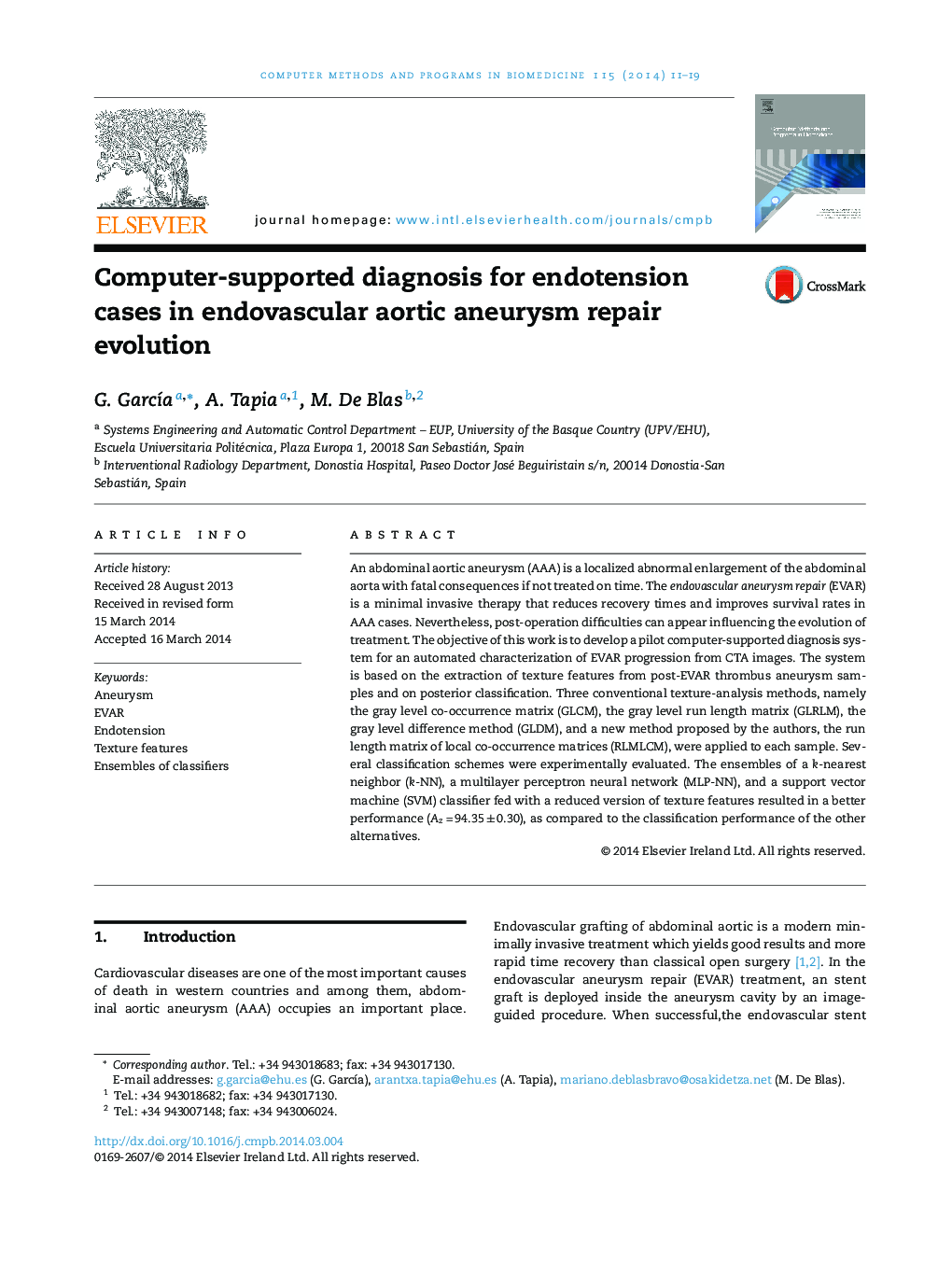| Article ID | Journal | Published Year | Pages | File Type |
|---|---|---|---|---|
| 467764 | Computer Methods and Programs in Biomedicine | 2014 | 9 Pages |
An abdominal aortic aneurysm (AAA) is a localized abnormal enlargement of the abdominal aorta with fatal consequences if not treated on time. The endovascular aneurysm repair (EVAR) is a minimal invasive therapy that reduces recovery times and improves survival rates in AAA cases. Nevertheless, post-operation difficulties can appear influencing the evolution of treatment. The objective of this work is to develop a pilot computer-supported diagnosis system for an automated characterization of EVAR progression from CTA images. The system is based on the extraction of texture features from post-EVAR thrombus aneurysm samples and on posterior classification. Three conventional texture-analysis methods, namely the gray level co-occurrence matrix (GLCM), the gray level run length matrix (GLRLM), the gray level difference method (GLDM), and a new method proposed by the authors, the run length matrix of local co-occurrence matrices (RLMLCM), were applied to each sample. Several classification schemes were experimentally evaluated. The ensembles of a k-nearest neighbor (k-NN), a multilayer perceptron neural network (MLP-NN), and a support vector machine (SVM) classifier fed with a reduced version of texture features resulted in a better performance (Az = 94.35 ± 0.30), as compared to the classification performance of the other alternatives.
